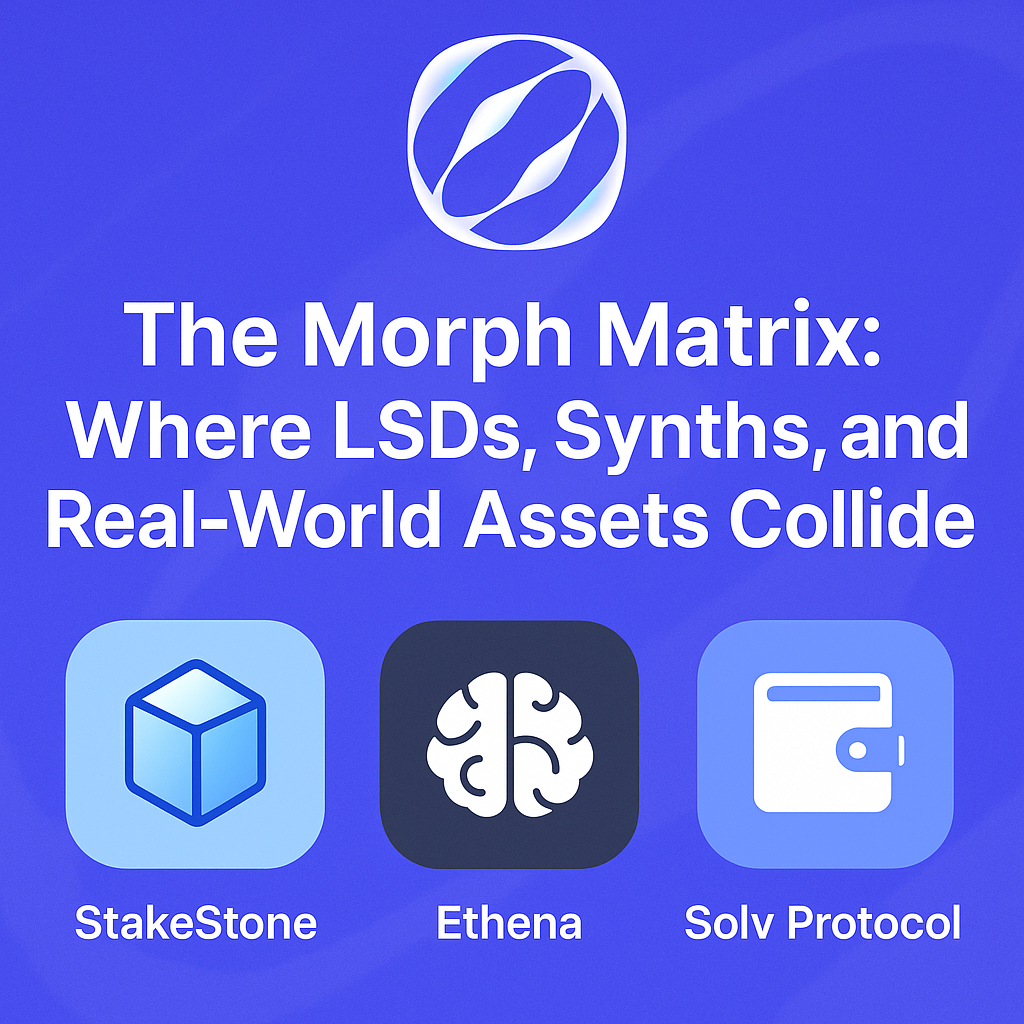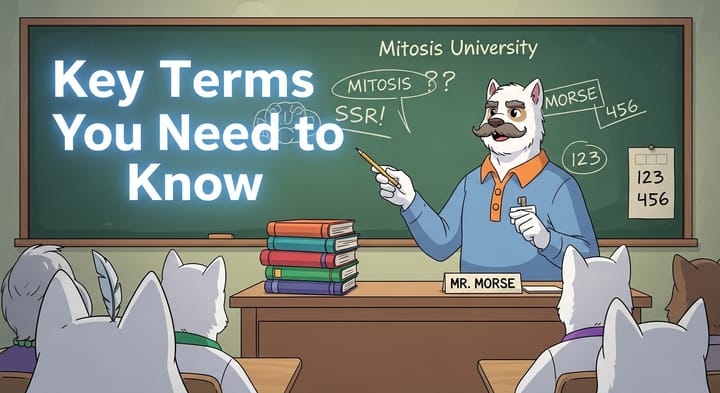🔮 The Morph Matrix: Where LSDs, Synths, and Real-World Assets Collide

A deep dive into how StakeStone, Ethena, Solv Protocol, and Lombard contribute to Mitosis' programmable liquidity ecosystem
The next evolution of DeFi isn’t just bridging assets — it’s programming liquidity with intelligence, flexibility, and modularity.
Mitosis is building that future through Zootosis, a framework for routing and managing liquidity using dynamic, composable logic. At its core lies Morph: a programmable vault engine that interacts with a wide range of ecosystem assets to enable cross-chain liquidity flows and governance-directed emissions.
These assets aren’t deposited directly by users. Instead, they’re contributed at the protocol level by specialized issuers whose tokens feed into Zootosis logic — powering rewards, routing strategies, and modular capital movement.
🧬 What Are Secondary Assets?
Secondary assets are ecosystem-native tokens — often yield-bearing, synthetic, or structured — that integrate into Mitosis via asset issuers. These assets are used by the protocol in Morph vault logic or as emission targets, not as user deposits.
Each asset issuer undergoes a vetting process and is whitelisted by governance. Once onboarded, their assets can be wrapped, referenced, or routed in vault strategies built on Morph.
🧊 StakeStone: Yield-Bearing ETH for Modular Liquidity
Asset: stSTON
Role in Mitosis: LSD collateral for ecosystem-level routing
StakeStone’s liquid staking token, stSTON, offers programmable ETH yield. Within Zootosis, it serves as a potential collateral input for vault designs — allowing protocols to work with staked ETH across chains without user-side redelegation.
🧠 Ethena: Synthetic Stable Liquidity
Asset: USDe
Role in Mitosis: Synthetic stablecoin for stable liquidity targeting
Ethena’s delta-neutral $USDe is integrated into Mitosis as a strategic stablecoin asset. It can be used in vault strategies that require non-volatile capital or for routing incentives denominated in stable units.
🖼️ Lombard: Bridging Real-World Assets into DeFi
Assets: RWA-backed tokens, NFT collateral
Role in Mitosis: Structured liquidity references
Lombard enables the tokenization of real-world assets and NFT-collateralized debt. These assets, while not staked directly by users in Morph, are part of the design space for modular vaults, enabling Mitosis to engage with real-world value flows.
💳 Solv Protocol: Structured Financial NFTs
Assets: FNFTs representing vesting, bonds, or fixed-income products
Role in Mitosis: Structured emissions or rewards references
Solv’s Financial NFTs (FNFTs) allow for programmed emission schedules, where vaults can align rewards with vesting or fixed terms. This logic is used inside Morph’s emission routing, making Solv a contributor to modular capital planning.
⚙️ Vault Logic, Not User Input
It’s critical to understand: these assets are not deposited directly by end users.
Instead, they act as inputs to Morph logic — used in:
- Emission distribution design
- Governance-directed incentive flows
- Inter-protocol liquidity bridges
- Cross-chain composability layers
This approach keeps Mitosis vaults secure, modular, and governance-aligned — allowing protocols to build with structured liquidity from leading issuers, without exposing users to unnecessary complexity.
🧠 The Big Picture
Mitosis’ design philosophy is modular by default. With Zootosis, it enables:
- ✅ Capital-efficient vaults
- ✅ Cross-chain liquidity routing
- ✅ Structured rewards and emissions
- ✅ Onboarding of real-world financial logic into DeFi
StakeStone, Ethena, Solv, and Lombard are just the beginning — many more issuers will contribute to this new layer of liquidity coordination.
🔗 Learn More
Mitosis isn’t building another bridge — it’s building a liquidity brain. And these issuers are its neurons.


Comments ()